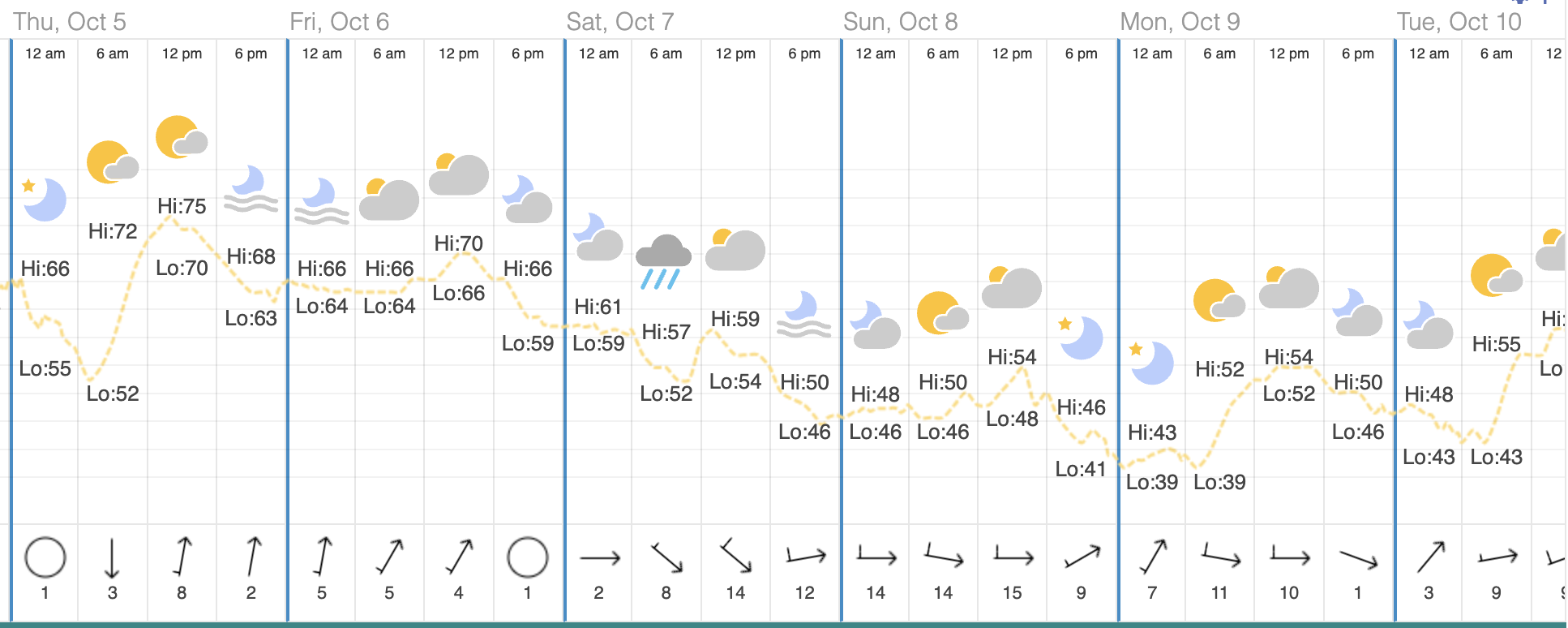I always get questions about how deer respond to weather. We have tried to address this in many different ways (rain, heat during the rut, wind, etc.).
A popular question that we have not tried to address is how deer respond to cold fronts because it is harder to answer than you may think. Sure, it’s relatively easy to tell when a cold front arrives – the wind shifts, the temperatures drop, and there is a change in the barometric pressure. Isn’t it obvious?
Yes. But try as I might, I cannot look at historical weather data at a specific location and say, “Ok, it looks like the front came through at 9 o’clock in the morning on the 15th of October.” If there’s a meteorologist out there with an algorithm I can use with NOAA weather station data to determine when the front passed, I’m all ears!
Since my memory is still pretty good, I can remember last week when a cold front moved through Pennsylvania. I woke up on Saturday, October 7th prepared for rain. Went to my tree stand, got damp, and came home. I didn’t bother going out that evening knowing that my day off on Monday would be much better weather.
Now that I know for certain when that front came through Pennsylvania, we can finally take a deep dive into buck movements before, during, and after a major front. On the Saturday, October 7th a vertical line of rain passed west to east through the state because Mother Nature does not care what day of the week I am allowed to hunt.
We have GPS collars on 11 adult bucks right now and we get locations about every hour, but the data are imperfect and for the time period we are looking at we have data for 5-7 bucks. Let’s see what they did.
The graph below shows their average distance moved per hour of the day from the 28th of September through the 4th of October. Each line represents the average distance moved (or speed) for a single deer over the course of 24 hours. There’s a lot of variation, but you can see they move more in the early morning and early evening hours.
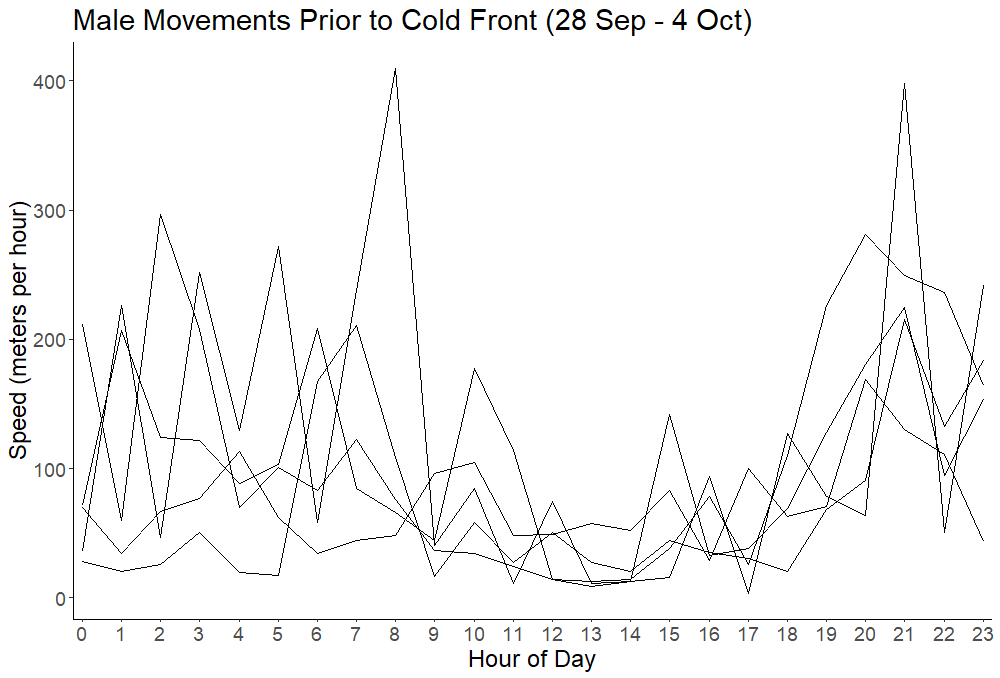
Two days before the front arrived this is what they did.
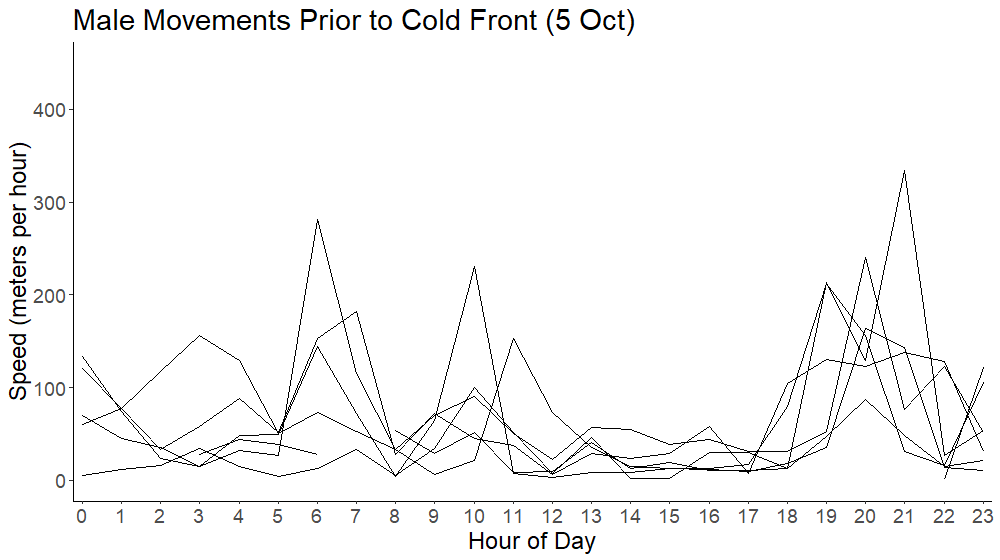
Now here is the day before the cold front. Note that I kept the y-axis scale the same across graphs so some movements of one deer go off the chart.
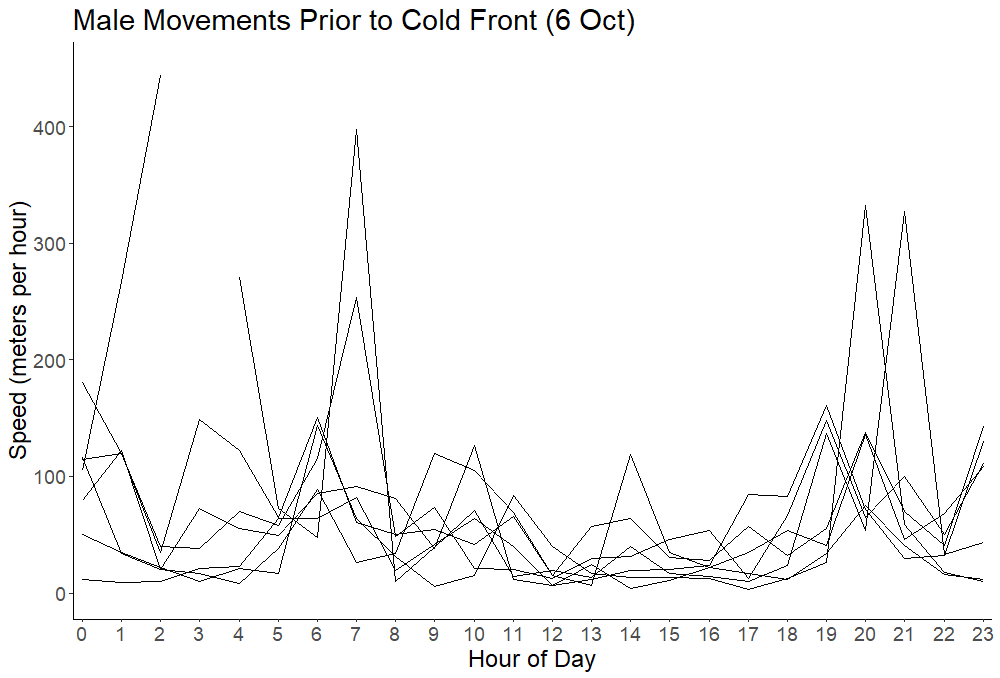
Below is what they did the day the cold front moved through the state. Remember, it rained. We’ve talked about males and rain before – they don’t like it (unlike females that don’t care).
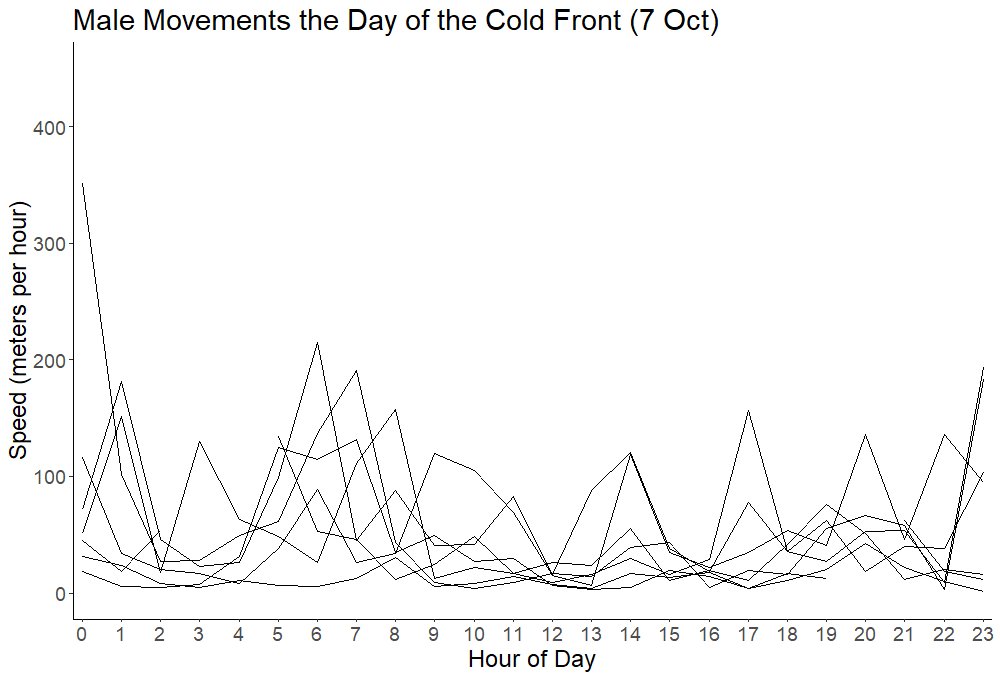
Some deer move very little during daylight hours, some move quite a bit, and several moved a lot at 10pm. Must have been a party.
What happened after the rain? Was there a big change in deer movements after the front came through on Saturday?
You’ll have to wait for the next blog post! And then we can talk about whether there’s anything really going on here…
-Duane Diefenbach
*Featured image at top of page is of past weather as presented by timeanddate.com
NOTE – this posted was updated 10/23/23 to correct graph on October 7.
